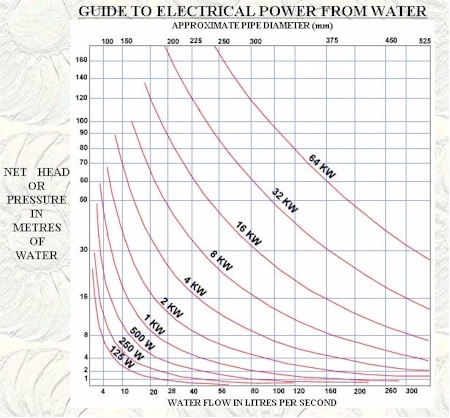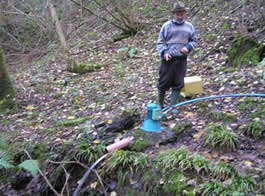Water Turbine Information
If you are lucky enough to have a water course across your property, such as a stream, river, or if you are lucky enough to own an old water mill, water turbines are an ideal solution for providing reliable long-term renewable energy.
Most sites vary considerably in flow between winter and summer, reflecting the differences in rainfall. It is important to make sure that the flow is sufficient to run the turbine, and if you wish extract maximum power from the water turbine site, it is often desirable to install two water turbines, switching in the second machine, when the water flow allows. Alternatively, a twin nozzle water turbine may be used, which incorporates a valve to isolate the second nozzle when insufficient flow is available to run both nozzles.
High Head Water Turbines are 10 metres head of water and over
Medium Head Water Turbines are 3 – 15 metres head of water
Low Head Water Turbines are 1.8 – 3 metres head of water
We Supply Various Water Turbines from 300W
Suneco can usually provide a turbine which will allow you to generate a significant proportion on your electricity needs. Even a modest flow of water may be capable of providing all of your electricity and heating needs, or alternatively, you can sell the excess energy back to the National Grid at attractive rates. Suneco water turbines have an output of 220v AC, and have a built in control regulator which maintains a constant electrical load on the turbine, regardless of power consumption – this provide frequency stability and avoids voltage going too high when there is no power drawn from the turbine. We sell a range of turbines including kaplan (for low head), crossflow and turgo (for high head). In fact, with suitable modifications to jet size, it is possible to utilize the Suneco turgo water turbines at very high head, making it a viable alternative to the pelton turbine. We have a range of turbines, loosely divided into ‘high’, ‘medium’ and ‘low’ head categories.
Click here to view our turbine range
Click here to get more info on high head water turbines

You can easily calculate the available power for a water turbine site using the following equation: Power (watts) = Head (m) x Flow (litres/sec) x 9.81 (gravitational constant ‘g’) A typical water to wire efficiency is around 70%, so you should multiply the result by 0.7 to get the actual amount of electricity that you can expect from the site. Most sites vary considerably in flow between winter and summer, reflecting the differences in rainfall. It is important to make sure that the flow is sufficient to run the turbine, and if you wish extract maximum power from the water turbine site, it is often desirable to install two turbines, switching in the second machine, when the water flow allows. Alternatively a twin nozzle machine may be used, which incorporates a valve to isolate the second nozzle when insufficient flow is available to run both nozzles. By reducing the jet diameter on our water turbines, it is possible to operate them with heads of over 100m.
Our water turbines are lightweight, and small in physical size, and yet able to supply high quality electricity, regulated in terms of frequency and voltage by their own internal voltage stabilisation circuitry. They are based on ‘Turgo’ runners, which provide an ideal alternative for the Pelton wheel at lower heads. The medium head turbines, for example, incorporate a ‘dump load’ ballast heating element in the draught tube, which uses water-cooling to ensure that the load on the turbine remains constant. The turbine may be operated for years with minimal maintenance, although it is necessary to apply grease to the bearings on your water turbine using the grease cap a couple of times a month, to ensure a long life.
500W turbine operating at a 110m head site (with custom 8mm jet)

500W turbine operating at a 110m head site
Please visit our other Hydro web pages for further information on estimating your Hydro potential, feasibility studies, abstraction licensing, system design and installation. maintenance.


